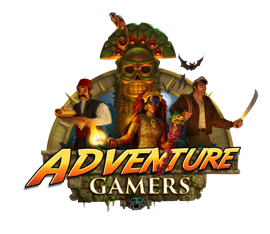Review for Dustborn
Dustborn is an excellent 3D narrative game in the mold of the Life is Strange series. While that series is almost entirely based on conversation, with an occasional minigame or puzzle to solve, Dustborn has more actual gameplay.
The game is set in an alternate America, where JFK wasn’t assassinated in Dallas, but Jackie was killed in that open-top car. In response, Kennedy set up an organization called Justice, to prevent an event like that ever happening again. Some claim his intentions were good, but the presidency was eventually won by an autocrat, who warped Justice into a Gestapo. What remains of the US, now called the American Republic, is a tyrannical, oppressive state. (California is now independent, calling itself Pacifica, and is equally repressive, although in a different way; the south is independent as Dixie.)
Also, in the past, there was an event called the Broadcast, which gave some people superpowers, including most of the main characters in the game. Both the Republic and Pacifica call the supers “deviants,” and they are liable to be shot on sight. This form of oppressive discrimination seems to have superseded others, as no one encountered in the game seems to care that Pax, the protagonist, is a Black woman, or that of the other three of the original crew, Sai is an observant Muslim; Theo is a Mexican immigrant; or that Noam is non-binary. But having powers: bad.
The Republic has its dictator, but the politics of Pacifica are equally scary. As you might expect, Pacifica’s technology is considerably more advanced than that of the Republic, but it is ruled with an iron fist by the Overseer. It’s not clear whether this is an AI or a "meat" person, but she oppresses “deviants” (they prefer to be called Anomals) quite as fiercely as the Republic, and Pacifica is far from a pleasant place to be, if you are an Anomal. The reference to X-Men, and discrimination against mutants when Chris Claremont was helming the series, is obvious.
The game is set up as a road trip; prior to its start, the four main characters committed a heist against a Pacifica institution, and have a thumb drive with data that Nova Scotia wants. Nova Scotia seems to be the only free and democratic place left in North America, and the characters must deliver it there. They start in San Francisco (Pacifica), so must drive into the Republic across the continent. Theo has obtained papers to the effect that the main characters are a rock band, and has set up gigs for them to play across the American Republic – a cover story. They obtain a tour bus, and begin the journey.
There’s a map in the bus, and after conversation with other characters, Pax can reference it and advance to the next stop on the journey. Within each stop, there are things to explore and conversations to have. In this, it reminds me of Road 96, which also involves journeys across a fascist nation (and is excellent in its own right, and well worth your attention).
I mentioned before that Dustborn has more actual gameplay than the Life is Strange series, and it’s time to explain that. For a start, combat happens in Dustborn; it’s all about melee, not guns (although there is a memorable sequence in which Pax heaves Molotov cocktails at a pursuing biker gang). Pax has a baseball bat (which can be upgraded with additional abilities over the course of the game), and she is a hard-nosed contender; some of her companion characters join her in battle, but even then, Pax does the bulk of the damage. I found combat somewhat challenging, but I imagine anyone who can beat Zelda bosses will do just fine. Loss takes you back to the beginning of the battle to retry, and if you only want to experience the story, settings allow you to change from normal to easy down to “no combat,” which skips battles and takes you to the victory screen (I confess I did this in the late game, because I just wanted to get through it).
In addition, there’s a rhythm minigame. When you play a gig, a cross appears, with “notes” sliding in from four directions, and you need to hit them (key presses) at appropriate times. I found it challenging, and only once managed a real success; most of the other times, the characters looked hang-dog, because I screwed up. I imagine dedicated rhythm game players will have no problems, but it actually doesn’t matter that much; the game progresses even if you, as a band flop (but the animations when I did well were nice). You can also, at times, pick up your guitar and write a new song (which gets added to your potential playlist), engaging in a less intense rhythm game.
And finally, there’s a “ghost catching” challenge. Fairly early, you gain a ME-EM, which supposedly is a game console from the early 90s, which has been altered to allow you to catch “Echoes,” or ghosts. As you move about the world, it bleeps and blinks when you are near an Echo; you trigger it to start this minigame. The world goes wireframe black-and-white; you see the Echo as a red blip and can target it, then drag it to center screen. It tries to escape, but you drag it back and eventually seize it. Capturing enough Echoes allows you to enable new Vox verbs.
“Vox” is Pax's superpower. She can trigger “protolanguage” words that can affect other characters. They don’t always work, but they are particularly useful in combat; for example, one stuns an opponent, so you can beat on them with the bat for a few seconds before they recover and start fighting back. Capturing Echoes adds to your protolanguage vocabulary, increasing your options over the course of the game.
Finally, as you navigate the environments, you may encounter and pick up electronic parts which allow you to upgrade your bat for greater power and options in combat, as well as presents which you can offer to other characters to improve your standing with them. It’s advisable to scout around a new scene to pick up as many of these as you can before addressing the main conflict.
Dustborn’s graphics are quite good; this isn’t a Triple-A game, but graphics are definitely at a Double-A level. I did note some clipping of objects, as well as the occasional sliding along the terrain. I might care if I was the game’s director, but neither distracted from my enjoyment, except to say “hmm.” The character animations are also quite good with lots of variation between poses and actions, though the faces are somewhat (but not entirely) static. I liked the audio; voice acting is excellent, ambient audio is decent, footsteps vary by terrain, and I very much appreciated some of the punky songs the band provides. I do feel that Pax talks very slowly – and there were moments when I wanted her to just pick up the pace – but maybe that’s me. As a New Yorker, I don’t have a lot of patience.
At the start of the game Dustborn advises you to use a controller, and if you can, I’d agree. I tried the mouse-and-keyboard interface for a bit, just to check it out, but the game does play much more smoothly using a controller. I’m pretty sure you can get through it without one, but it is obviously designed with a controller in mind (there are PlayStation and Xbox versions as well). I appreciated the game’s hint system. Occasionally, an animated graphic will show up at upper left or right, telling you to use this button, so it’s rare that you don’t know how to proceed. With one exception: For quite a while, I couldn’t figure out how to upgrade my baseball bat, and pressed every button in creation, hoping to bring up the relevant dialog, but failed. The answer is: the bat upgrade dialog is not accessible through the usual user interface. Instead, when your party is at a campsite, you’ll find your bat leaning against a bench somewhere. Select it, and then the bat upgrade dialog appears. This is neither obvious, nor well messaged.
Overall, Dustborn is an excellent game, with appealing characters, a compelling story, and well-conceived gameplay. It is definitely worth the ~20 hours it will take you to complete.
Our Verdict:
Dustborn is a captivating narrative adventure that combines a rich, alternate history setting with diverse gameplay mechanics, delivering a memorable experience despite minor technical quirks.
You don't want to miss these articles
Adventure Gamers Community
Community reviews for more Adventure Games (randomly selected)
Review of Ben Jordan: Paranormal Investigator - Case 7: The Cardinal Sins
Rating by Niclas (Nov 6, 2012)
Review of Ben Jordan: Paranormal Investigator - Case 7: The Cardinal Sins
Rating by Niclas (Nov 6, 2012)










_capsule_fog__medium.png)






__medium.jpg)











